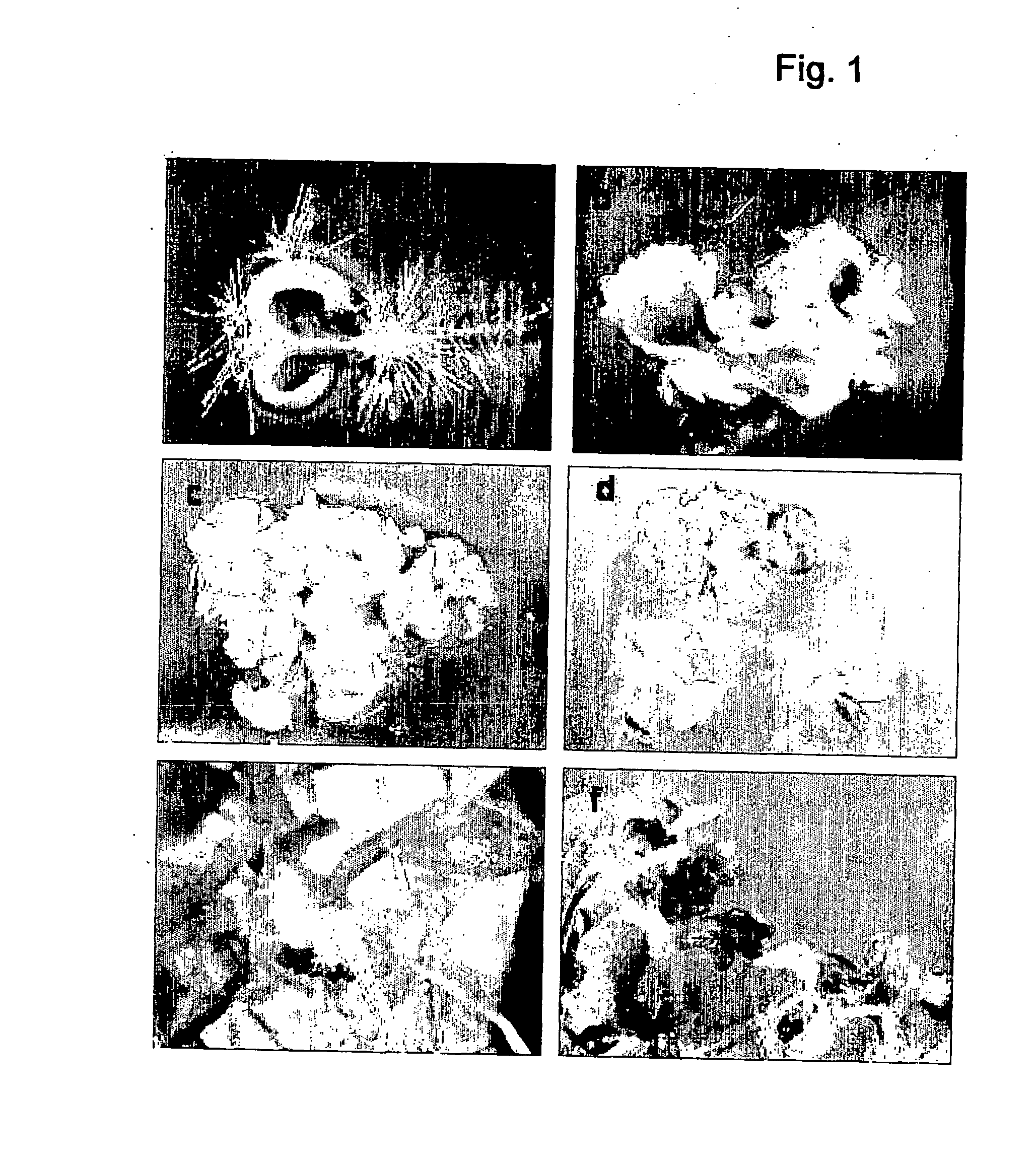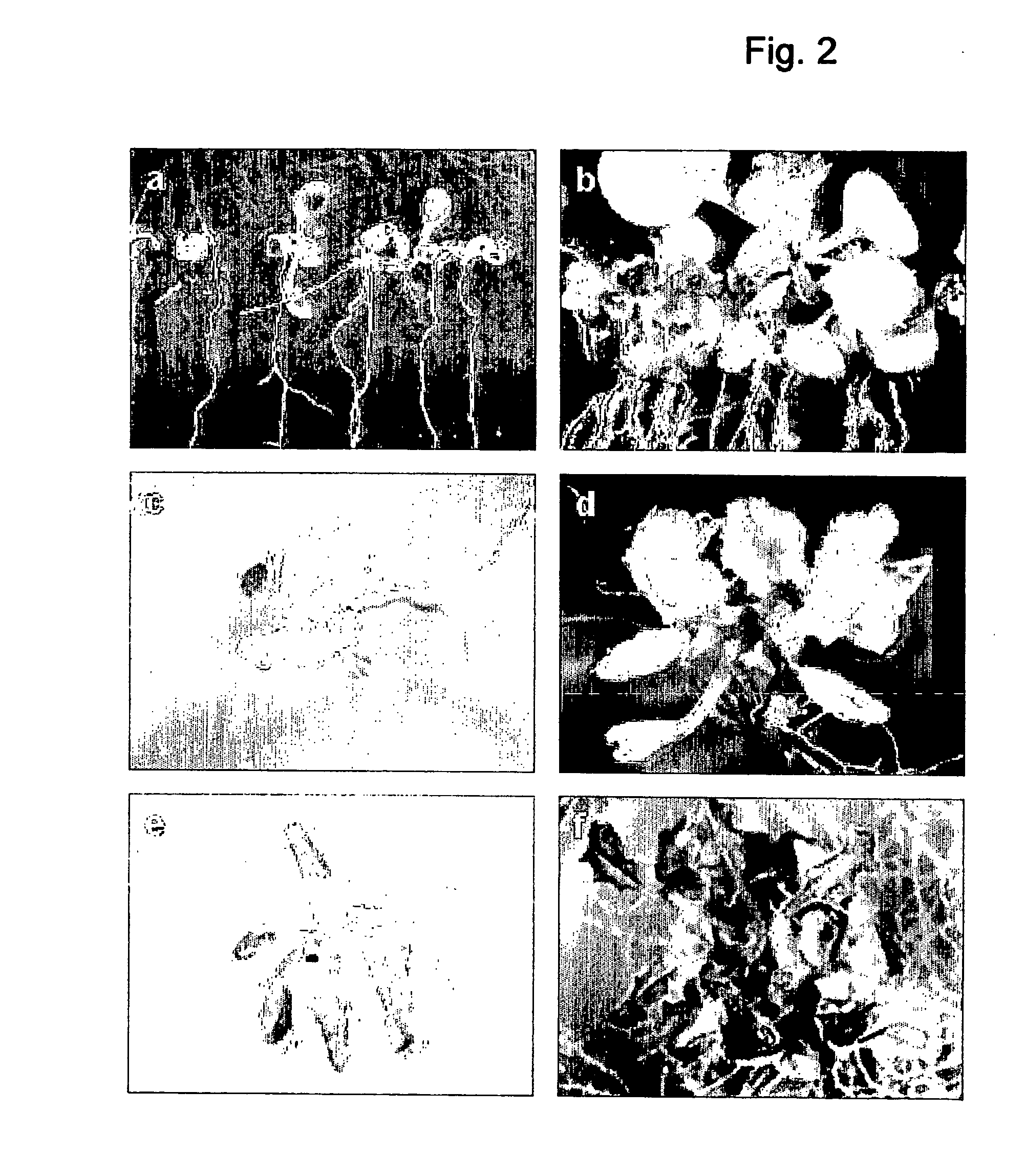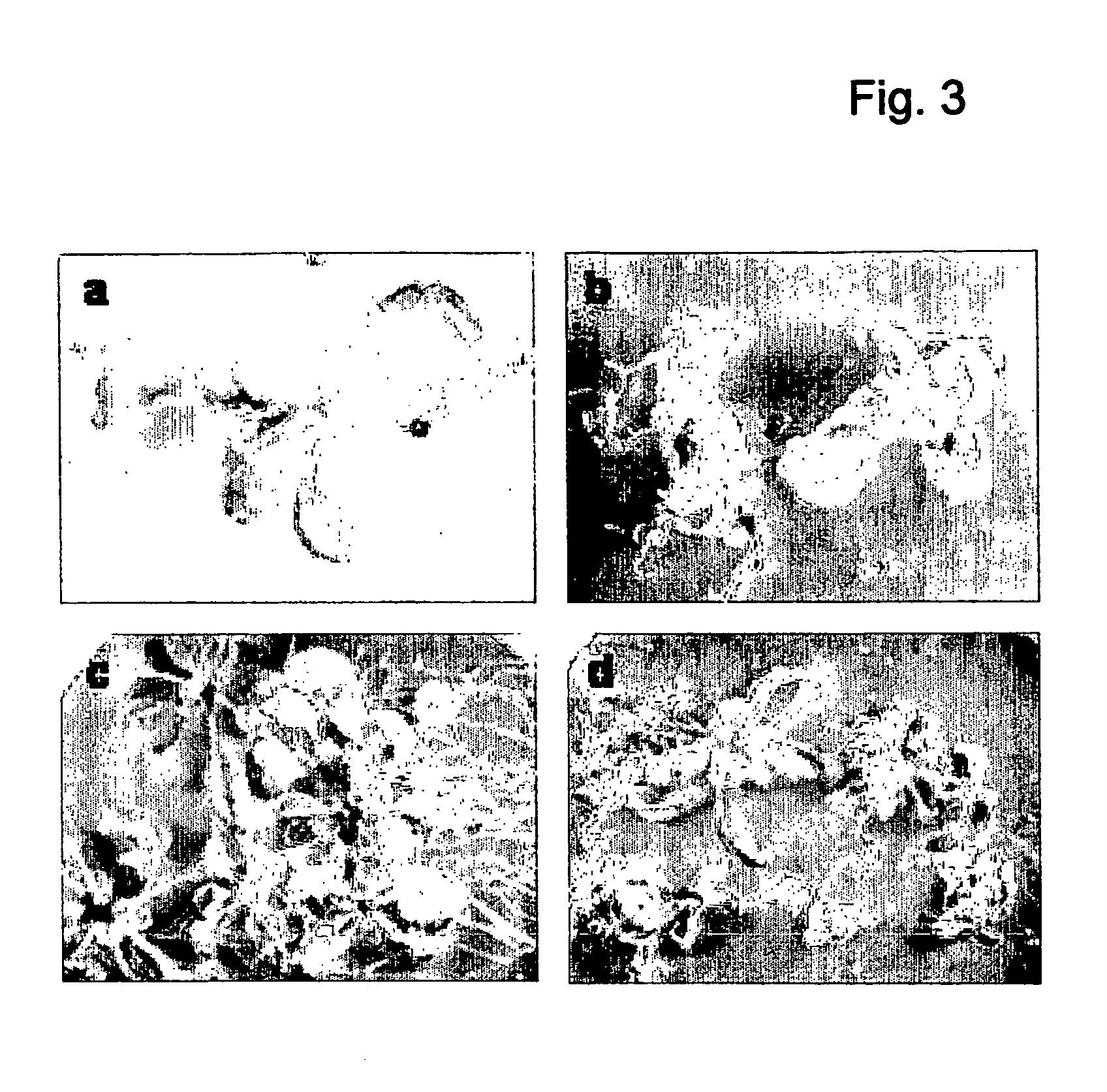Control of plant growth and developmental process
a technology of plant growth and development process, applied in the field of plant biotechnology, can solve the problems of affecting the production of hybrid seed, affecting the production of apomictic plants, and affecting the production of plants, and not leading to the production of routinely apomictic plants
- Summary
- Abstract
- Description
- Claims
- Application Information
AI Technical Summary
Benefits of technology
Problems solved by technology
Method used
Image
Examples
example 1
N-Terminal Plant-Specific PRGRPPGSKNK (SEQ ID NO:2) Motif
[0125] Proteins with the sequence identifiers PRGRPPGSKNK (SEQ ID NO:2) are so far found exclusively in higher plants. In the dicotelydenous plant species Arabidopsis thaliana 6 genes can be found by data mining and in the monocotyledonous species Oryza sativa (rice) also 6 genes are present. In Arabidopsis the encoded proteins range from 206 to 339 amino acids.
[0126] The accession number of the above mentioned Arabidopsis sequences is provided as a way of illustration, in table 1.
[0127] Table 1. Arabidopsis sequences containing PRGRPPGSKNK (SEQ ID NO:2) at the N-terminus, followed by a single DUF296 domain. Numbers are derived from Genbank entries.
genomic sequenceproteinNM_115413.1NP_191115.1NM_117526.1NP_567432.1NM_106300.1NP_177776.1NM_101943.1NP_173514.1NM_117890.2NP_193515.1NM_124348.1NP_199781.1
example 2
N-Terminal Plant-Specific PRGRPPGSKNK (SEQ ID NO:2) like Motif, Combined with a C-Terminal DUF296 Domain
[0128] The sequence PRGRPPGSKNK (SEQ ID NO:2) is present in the N-terminal part of plant proteins. At position 13-20 residues downstream of the lysine residue (K), is positioned a DUF296 domain, which until the present invention had unassigned function, and which stretches out for about 120-140 amino acid residues. The remaining N-terminal amino acid sequence is much less conserved. Of the 48 DUF296 domains present in the PFAM database, 36 are found in eukaryotes and exclusively in higher plants. Presently 31 of the listed DUF296 domains are found in Arabidopsis and 2 in rice. This probably reflects the progress in accommodating all the available data in systems like PFAM, as it can easily be found that rice proteins containing a PRGRPPGSKNK (SEQ ID NO:2) motif contain a DUF296 domain as well. Prokaryotic proteins containing a DUF296 domain are small (around 140 amino acid residu...
example 3
Plant Proteins Containing a Single N-Terminal PRGRPPGSKNK (SEQ ID NO:2) Like Motif are Involved in Transcriptional Regulation
[0131] A2220 bp XbaI-EcoRI promoter fragment (about −3570 to −350 upstream of the ATG translational start site) of an Arabidopsis gene encoding an auxin inducible plasma membrane protein (AF098631) was fused upstream of a yeast HIS3 reporter gene in pINT1 (AF289993) after digestion of this vector with SpeI and EcoRI. After homologous recombination in yeast strain Y187 (see P. B. F. Ouwerkerk and A. H. Meijer 2001, Current Protocols in Molecular Biology 12.12.1-12.12.22, John Wiley & Sons, Inc.) it was found that no 3-AT was required to suppress growth of the recombinant yeast strain on histidine-lacking medium (28° C.). In order to find cDNA sequences encoding proteins that (putatively) interact with the Arabidopsis promoter sequence, a one-hybrid screening was performed in yeast. The cDNA library in lamdaACTII (see same ref) was prepared starting from a 1 / 1 ...
PUM
 Login to View More
Login to View More Abstract
Description
Claims
Application Information
 Login to View More
Login to View More - R&D
- Intellectual Property
- Life Sciences
- Materials
- Tech Scout
- Unparalleled Data Quality
- Higher Quality Content
- 60% Fewer Hallucinations
Browse by: Latest US Patents, China's latest patents, Technical Efficacy Thesaurus, Application Domain, Technology Topic, Popular Technical Reports.
© 2025 PatSnap. All rights reserved.Legal|Privacy policy|Modern Slavery Act Transparency Statement|Sitemap|About US| Contact US: help@patsnap.com



